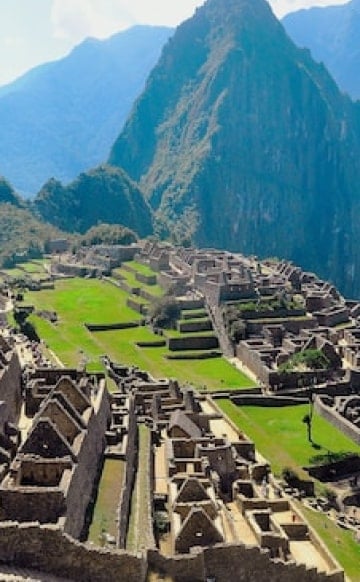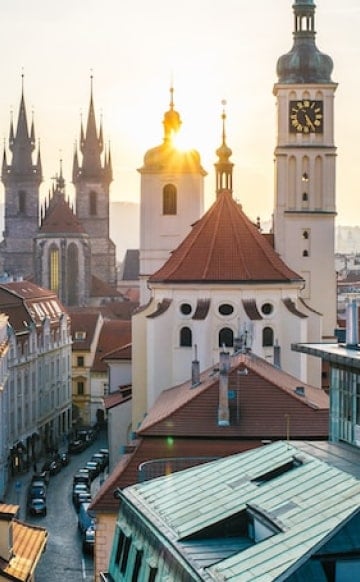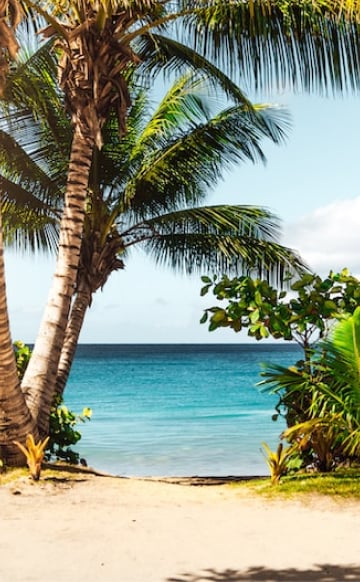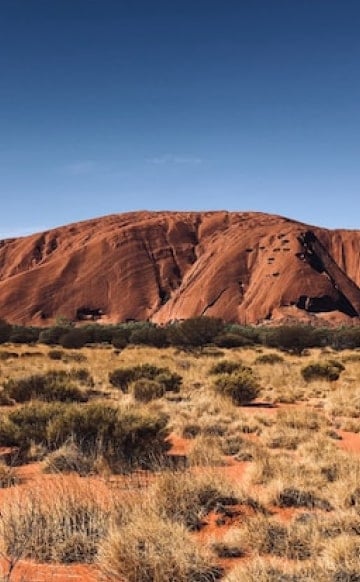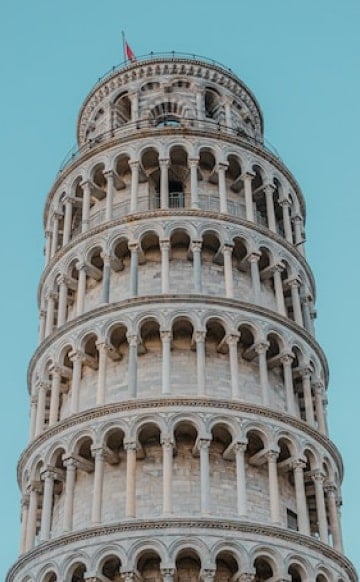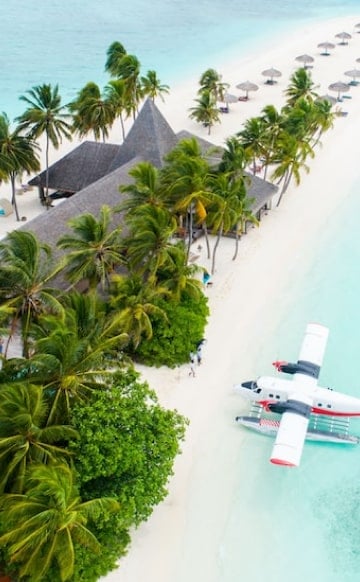US Tourism Interest is Slowly Recovering, but Several Cities Surge Over 250%

With interest in travel down as much as 87% in parts of the U.S., American tourism is still struggling for a full recovery. Travel-related searches are lower in three-quarters of the country in the last six months of 2021 over 2019. Although the travel industry is recovering, analyzing every metro in the U.S. reveals average interest is still down 20% from before the pandemic.
Our Most Interesting Findings
-
- It’s not all doom and gloom — travel-related Google searches have more than doubled for some areas.
- Only seven areas have higher local, domestic and international search demand than in 2019, indicating a successful full market recovery.
- Small cities are in the lead, collectively recovering 75% more travel searches than large cities.
We obtained travel-related search data for the 210 U.S. metros tracked by Google Trends, a tool that analyzes the popularity of top Google search queries. An analysis of local tourism (staycation) and domestic/international travel searches reveals only 48 cities are experiencing more tourism interest than in 2019. Another 152 cities are reckoning with lower local and domestic/international interest.
What’s Happening
The cities recovering their pre-pandemic tourism interest are small, averaging 100,000 in population. The pandemic has not spared small towns, but the Organization for Economic Co-operation and Development reports that large cities encountered the most significant decline in tourism activity since 2019. Metropolises dependent on business travel, like New York City, are still enduring tremendous economic tourism losses and have yet to recover much activity.
Recovery disparities remain when examining local versus domestic/international travel searches. Although travel interest is down nationally, small cities outpace large metros in local tourism search recovery by 32% and domestic/international recovery by 75%. Even more, the ten largest metropolitan areas in the U.S. have only recovered half their travel interest compared to the national average.
Vacation rental booking data also shows slow tourism recovery in large cities. AirDNA, a vacation rental research platform, reports demand for short-term vacation rentals in large cities was down 25% in 2021 over 2019, with demand in small towns up as high as 60% during the same time. While AirDNA expects the market for short-term rentals to surpass pre-pandemic levels this year, delayed recovery in large cities drove the platform to lower last year’s overall demand forecast. However, both the AirDNA report and our independent findings indicate urban vacation demand is recovering slowly and far from pre-pandemic levels.
We collected and analyzed over 55,000 travel-related search data points from Google Trends for a peripheral view of recovering travel demand. Our investigation into local and domestic/international queries reveals a fractured recovery, with parts of the U.S. exceeding pre-pandemic demand and other locations lagging considerably behind. Our 210 metro study shows just seven areas have increased local and domestic/international travel interest this year compared with 2019.
Regional Differences
Although down overall, domestic and international travel interest is 23% higher than local tourism in most U.S. cities. However, search interest is not growing evenly — nearly half of the recovered domestic and international travel destinations are in the South. One notable outlier is Mississippi, particularly Greenville. Even with a 64% decrease in local tourism interest, Greenville has a 400% increase in domestic and international travel interest over 2019. Other notable increasing domestic/global interest regions include Meridian, MS; San Angelo, TX and Hattiesburg, MS — all over 20% since 2019. Regardless, not all of the South is recovering; interest in visiting Bluefield, WV fell the most out of the 210 cities in our analysis — down 75%.
Eastern metropolises dependent on business travel were crushed during the pandemic, and falling domestic and international travel interest reflects this. Typically a top global tourist destination, New York City still has only half its travel search interest compared to 2019. More broadly, travel interest in the East is 44% behind the national average, with only two cities surpassing 2019 levels: Altoona, PA and Watertown, NY. With travel interest down and COVID-19 mandates easing, metropolises like New York City present a unique opportunity for early 2022 travel before the wariness to visit large cities wears off.
The Midwest leads local tourism recovery, holding nearly half of the nation’s recovered cities. However, average interest in the region is still down 17% from 2019 — only slightly better than the 23% national decline. Furthermore, the Midwest holds nearly a quarter of the cities where local tourism is still lower than in 2019. The areas with depressed interest cluster along the Mississippi River, but the recovering locations are spread out, with no apparent correlation to population size or COVID case rates.
Local tourism interest is falling even more sharply along the Mississippi River in the South, where COVID cases were high in the second half of 2021. Local tourism interest is down for every Mississippi metro in our analysis. However, it made up what is lost in local travel with domestic and international travel interest, making it the state with the most recovered cities in all categories.
The West largely mirrors the national pace with a 19% drop in local and domestic/international travel interest. However, the region sets itself apart by holding three of the seven cities with recovered local, domestic and international search interest: Fairbanks, AK; Eureka, CA and Grand Junction, CO. There are still stragglers in the West; travel interest in Los Angeles and Seattle are both down an average of 41% from 2019. Both locations are prime travel destinations and (as with New York City) present unique opportunities for early 2022 travel.
Unique Opportunities
Last summer was the season of “revenge travel.” This Summer, travelers will go big with a “GOAT” (Greatest of All Trips) mindset, according to Expedia. While experts expect travel demand to clip up, the vacation rental supply, hotel and restaurant staffing and airline availability may not recover quickly. Already, vacation rental occupancy rates broke a record in January, and average daily rates are up 30% from last year, according to AirDNA.
We mapped out hidden gems based on our combined local, domestic and international tourism search analysis. The locations below have travel search interest down over 35% in all categories compared with 2019. These locations present a unique getaway opportunity to escape the crowds, avoid higher prices, limited hours, and longer wait times.
Dive In
The two tables below break down the top and bottom 50 markets we analyzed, where you can search and compare local, domestic and international vacation-related Google search growth in the last six months of 2021 with 2019 to plan your next vacation.
Methodology
We created this article’s visualizations and analysis from a list of the 210 U.S. designated market areas tracked by Google Trends to compare travel interest, July-Dec 2019 to 2021. We broke our study into two sections, (1) Measure local tourism (staycation) interest in these areas and (2) Measure U.S. domestic and international travel interest in visiting these cities.
We used the popular search phrase “things to do” to gauge interest for both sections. The search keyword “things to do near me” allowed us to gain a peripheral view of local tourism interest within each metro using the interest by region feature of Google Trends. Then, we analyzed global searches for keywords, “things to do in [city]” to gauge domestic and international interest in visiting each of the 210 metros using the interest over time feature.
We used a control word to gather data for the 210 domestic and international queries to scale all results identically. The control word is more popular than any single keyword search but not so popular that locations with less popularity normalize to zero. Our control word was “learn to fly.” Naturally, it varied in favor between 2019 and 2021, so we scaled the averages of 2019 to 2021 to perform a direct comparison.
Our local tourism analysis is based on the 210 U.S. designated market areas (DMAs), also known as media markets, that define TV and radio territory in the country. The 210 DMAs cover the entire U.S. To avoid longtail metro keywords in our domestic and international analysis, we used the most populous city in each DMA for each “things to do in [city]” query.
Google Trends calculates popularity by region and interest over time using a scale of 0 to 100. A score of 100 is the area or time a keyword was most popular as a proportion of total searches in that area or timeline. A recovering city has a higher proportion of searches for our keyword in 2021 over 2019, not a higher absolute query count. Google Trends bases its data on a random sample of searches representative of all Google searches. It does not use every search made during a specified query timeframe — providing the whole data set would be too large to process. Therefore, it is possible to obtain varying results for the same query. To combat this, we ran all of our searches twice on different days and averaged the results to attain higher accuracy. We exported all data for this project between 2/10/22-2/11/22.
We obtained city population estimates from the U.S. Census Bureau.
You can download our Google Trends analysis in its entirety (from Google Drive) here.
Excel, Flourish, Tableau and Google Trends were the tools used to analyze and create data visualizations for this article.

